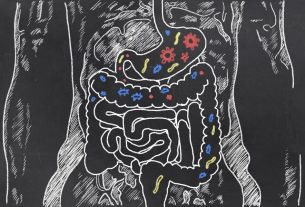Regular physical activity can improve blood circulation, strengthen the immune system, help you lose weight, reduce the risk of heart disease and strengthen bones, for example. These benefits can be achieved in about 1 month after starting regular physical activity, such as walking, jumping rope, running, dancing or weight training.
Furthermore, practicing physical activity after studying is a great strategy for consolidating learning due to increased cerebral blood circulation and increased production of catecholamines, such as norepinephrine and dopamine, which are essential substances for memory.
Physical activities can be done at any age, but it is important to have a medical evaluation before starting exercises to assess your general health and heart conditions.

16 benefits of physical activity
The main benefits of physical activities are:
1. Combat excess weight
Physical activities are the best way to combat excess weight or obesity, as well as helping to maintain weight loss. This is because exercise accelerates the body’s metabolism, favoring energy expenditure and calorie burning, and the more intense the exercise, the more calories are burned.
Furthermore, some studies show that interspersing aerobic activities, such as walking, running, swimming or cycling, with strength and resistance training, such as weight training, can maximize fat loss by increasing muscle mass.
This helps speed up metabolism as muscles use more energy than fat cells, which is essential for losing excess weight. Check out other ways to speed up your metabolism.
2. Reduces blood pressure
Some studies show that doing aerobic physical activity regularly, such as walking, for example, helps reduce blood pressure and improve blood circulation, which are important benefits for hypertensive patients.
3. Reduces the risk of cardiovascular diseases
Physical activities improve good cholesterol (HDL) levels and reduce bad cholesterol (LDL) and triglycerides, reducing the risk of cardiovascular diseases, such as atherosclerosis, heart attack or stroke.
4. Helps control blood sugar
Physical activities help control blood sugar by improving insulin sensitivity, which helps reduce blood sugar levels and can be an important ally in preventing and combating diabetes.
Ideally, you should practice aerobic exercise for at least 150 minutes a week to help reduce blood sugar levels and combat diabetes.
5. Reduces the risk of diabetes
By controlling blood sugar levels, physical activities can help prevent type 2 diabetes, in addition to metabolic syndrome, characterized by the accumulation of fat in the abdominal region, changes in cholesterol and triglyceride levels, increased blood pressure and blood sugar levels. circulating glucose. Understand better what metabolic syndrome is.
6. Reduces visceral fat
Doing regular physical activity helps reduce excess fat around the waist, called visceral fat, which is related to increased insulin resistance, causing the body to not use sugar correctly, which leads to increased blood sugar levels. glycemia, increasing the risk of developing diabetes.
Furthermore, reducing visceral fat also helps prevent cardiovascular disease, high blood pressure, liver failure or breast or colorectal cancer, for example. Understand the main risks of visceral fat.
7. Strengthens bones and joints
Physical activities such as walking or weight training help strengthen bones and joints by promoting bone growth and increasing bone strength and density.
This benefit is especially important for the elderly as it helps prevent osteoporosis and reduce the risk of injuries, falls and fractures related to weakening of the bones.
8. Increases muscular strength and endurance
Muscle-strengthening physical activities, such as weight training, can help increase or maintain muscle mass and increase muscle endurance and strength, as these exercises stimulate muscle building and function.
These benefits are very important, especially for elderly people who experience a reduction in muscle mass and strength that occurs naturally with aging, and which can cause injuries or increase the risk of falls.
Therefore, practicing regular physical activity, with strengthening exercises, is essential to reduce loss, maintain and improve muscle strength and endurance.
9. Promotes a feeling of well-being
Physical activities stimulate the production and release of endorphins, which is a hormone produced by the pituitary gland in the brain, which has an analgesic effect on the body, which helps promote a feeling of physical and mental well-being.
Furthermore, when performed regularly, physical activities help to increase relaxation, improve feelings of pleasure, mood, self-confidence and self-esteem, which promotes a feeling of better quality of life and well-being.
10. Reduces stress
Physical activities help balance the level of stress hormones, such as cortisol and adrenaline, which are generally released in large quantities in the body in times of stress and nervousness, as a normal response from the body to resolve stressful situations.
However, in people with chronic stress, levels of these hormones can be constantly high, and physical activity can reduce the production and release of cortisol and adrenaline, helping to reduce stress.
11. Combats anxiety and depression
Physical activities help increase the production, release and sensitivity of neurotransmitters in the brain, such as serotonin, norepinephrine and dopamine, responsible for regulating mood, sleep, appetite, heart rate and memory.
When these neurotransmitters are found in low concentrations in the body, they can cause anxiety or depression, and therefore, physical activities, by increasing the amount of these substances in the body, help combat anxiety and depression.
12. Helps you sleep better
Physical activities help you sleep better and improve sleep quality, allowing you to fall asleep faster and with deeper, more restful sleep, especially in people who have trouble sleeping or insomnia.
13. Increases mood
The endorphins, serotonin and dopamine released during physical activity help increase mood, improve energy, a sense of well-being and alertness, as well as reducing the feeling of tiredness.
Furthermore, exercise improves the supply of oxygen and nutrients to tissues, which increases willingness and energy to carry out daily tasks and, therefore, it is important for people of all ages to exercise.
14. Strengthens the immune system
Physical activities help to strengthen the immune system and increase and improve the body’s ability to fight infections, as they activate defense cells, stimulate the production of anti-inflammatory substances and have antioxidant action, which improves the functioning of body cells. immune system.
15. Improves school performance
Physical activity also has many benefits for brain health in children and teens, including improving memory and learning ability and reducing symptoms of depression.
This is because exercise increases blood circulation in the brain, the production of neurotransmitters such as norepinephrine and serotonin, and stimulates the development of the hippocampus in the brain, which is the region responsible for memory.
Some studies show that physical activities, even when not performed regularly, increase memory capacity, information processing speed, attention and school performance.
16. Reduces the risk of cancer
Doing physical activity regularly can also help reduce the risk of developing various types of cancer, such as breast, colorectal, uterine, esophageal, bladder, lung or stomach cancer, for example.
Furthermore, physical activity before, during and after cancer treatment helps to improve the action of the immune system, reduce anxiety, in addition to accelerating recovery after surgery, reducing the side effects of treatment, strengthening muscles and bones, and increase range of motion.
Preparation to start physical activities
Before starting to practice physical activities, it is important that medical examinations are carried out to check the general state of health, evaluate the joints and cardiac function, especially if the person is sedentary.
This way, the doctor can indicate if there is any exercise that is not recommended, the ideal intensity for exercising and the need for the person to be accompanied by the gym teacher or physiotherapist, for example.
Furthermore, it is important that the person is accompanied by a trained professional to reduce the risk of injury.
For the elderly, pregnant women or overweight people with a high BMI, in addition to medical evaluation, follow-up with a physical education professional is recommended.
BMI Calculator
See if you are within the ideal weight to exercise:
The BMI calculator is only a guidance tool and does not serve as a diagnosis or replace consultation with an endocrinologist, cardiologist or nutritionist.
How to start practicing physical activities
Starting to practice physical activity can be quite difficult for people who are not used to it, so it is recommended that lighter exercises be carried out initially and, preferably, outdoors, such as walking, for example.
Ideally, exercises should be performed 3 to 5 times a week, but you can start slowly, doing just 2 days a week, for 30 to 60 minutes. From the second week onwards, you can increase the frequency to 3 or 4 days, depending on time availability.
Care when practicing physical activities
When practicing physical activities, some precautions are important, such as:
- Understand how and why physical activity should be performed and the execution time;
- Choose physical activities that are appropriate to your physical condition so as not to make excessive effort that could harm your health;
- Respect the limits of your own body;
- Increase the intensity of physical activity gradually over time according to health goals;
- Choose a time to do physical activity and maintain discipline so as not to lose your stimulus;
- Use appropriate sports equipment according to the sport that will be performed;
- Choose safe environments to carry out activities.
These precautions help reduce the risk of injury or improve exercise efficiency and obtain the desired benefits.
Furthermore, it is important that physical activity is accompanied by a healthy, nutritious and balanced diet.
Check out nutritionist Tatiana Zanin’s tips on what to eat before and after physical activity:
When physical activity is not indicated
Practicing physical activity is recommended for people of all ages.
However, people who have uncontrolled high blood pressure, pregnant women with eclampsia or pre-eclampsia, for example, should only do physical activities when approved by their doctor and, preferably, accompanied by a physical education professional to avoid complications.
Adults and the elderly must pay attention to their weight, because when they are below their ideal weight they should not exercise regularly to avoid excessive caloric expenditure.
Furthermore, it is important to be aware of some situations during exercise, such as chest pain, shortness of breath, dizziness and palpitations, for example. In these cases, it is recommended to stop the activity and seek medical help as soon as possible or the nearest emergency room.

Sign up for our newsletter and stay up to date with exclusive news
that can transform your routine!
Warning: Undefined array key "title" in /home/storelat/public_html/wp-content/plugins/link-whisper-premium/templates/frontend/related-posts.php on line 12
Warning: Undefined array key "title_tag" in /home/storelat/public_html/wp-content/plugins/link-whisper-premium/templates/frontend/related-posts.php on line 13



